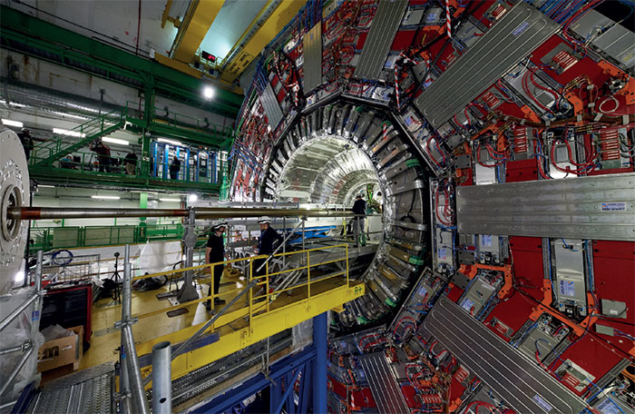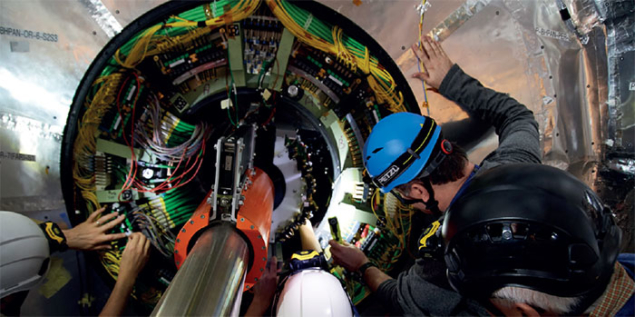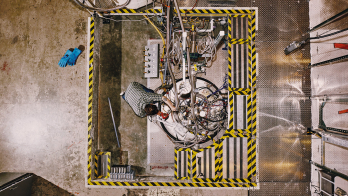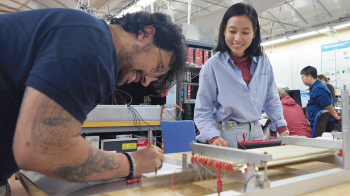

Image credit: M Brice/CERN.
At the beginning of March, the CMS collaboration successfully replaced the heart of its detector: the pixel tracker. This innermost layer of the CMS detector, a cylindrical device containing 124 million sensitive silicon sensors that record the trajectories of charged particles, is the first to be encountered by debris from the LHC’s collisions.

The original three-layer 64 Mpix tracker, which has been in place since the LHC started operations in 2008, was designed for a lower collision rate than the LHC will deliver in the coming years. Its replacement contains an additional layer and has its first layer placed closer to the interaction point. This will enable CMS to cope with the harsher collision environment of future LHC runs, for which the detector has to simultaneously handle the products from a large number of simultaneous collisions. The new pixel detector will also be better at pinpointing where individual collisions occurred and will therefore enhance the precision with which predictions of the Standard Model can be tested.

Image credit: M Brice/CERN.
After a week of intense activity, and a few frayed nerves, the new subdetector was safely in place by 8 March. After testing is complete, CMS will be closed ready for the LHC to return to action in May.







